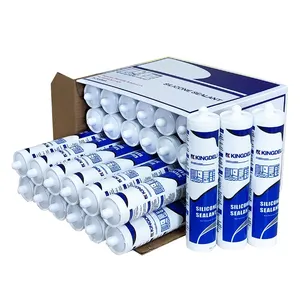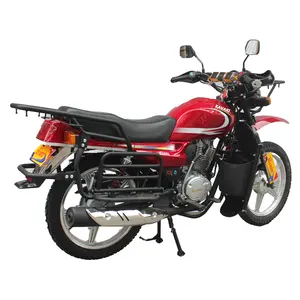Phổ biến trong ngành của bạn






Thương hiệu riêng nhanh chóng tự làm khô Polyester huỳnh quang trang trí cách điện véc ni
68.728 ₫ - 76.364 ₫
Đơn hàng tối thiểu: 500 Kilogram







Polyurethane PU phun bọt gắn của cửa sổ và khung cửa bọt Sealant
20.364 ₫ - 38.182 ₫
Đơn hàng tối thiểu: 500 Cái







Chất lượng cao mẫu có sẵn Acrylic Aerosol phun bán buôn graffiti tiện dụng phun sơn
19.091 ₫ - 24.182 ₫
Đơn hàng tối thiểu: 7500 Cái


Chất lượng cao keo silicon trung tính thời tiết silicona keo thủy tinh rõ ràng keo silicon cho hồ cá
8.910 ₫ - 15.273 ₫
Đơn hàng tối thiểu: 100 Cái







Sinh thái thân thiện chống cháy sơn tĩnh đối với rèm/đường viền bằng vải/tường vải/tường giấy
25.455 ₫ - 38.182 ₫
Đơn hàng tối thiểu: 50 Kilogram






EVER QUEEN Bình Xịt Chống Nước Và Sơn Phủ Chống Thấm Cho Bức Tường Bên Ngoài Của Phòng Tắm Trên Mái Nhà
4.073 ₫ - 4.837 ₫
Đơn hàng tối thiểu: 50 Hộp các tông






Tự động lạnh UV máy cán, không thấm nước chống cháy chống xước in cửa hàng Tarpaulin Banner
992.727 ₫ - 1.272.727 ₫
Đơn hàng tối thiểu: 20 Kilogram






Nhà Máy Bán buôn chống cháy chống ăn mòn lớp phủ cao Clo Polyethylene chống ăn mòn mồi
84.000 ₫ - 89.091 ₫
Đơn hàng tối thiểu: 200 Kilogram






Lớp phủ chống cháy sơn acrylic cho pha trộn các loại vải chẳng hạn như bông và vải lanh
25.455 ₫ - 38.182 ₫
Đơn hàng tối thiểu: 50 Kilogram






Nhà Máy Bán buôn chống cháy lớp phủ cao Clo polyethylene mồi cho bề mặt kim loại
89.091 ₫ - 96.728 ₫
Đơn hàng tối thiểu: 200 Kilogram






Thân thiện với môi trường chống cháy bột sơn cho rèm/valance/tường vải/hình nền
25.455 ₫ - 38.182 ₫
Đơn hàng tối thiểu: 50 Kilogram
Các tìm kiếm liên quan:






Màu xanh lá cây chống cháy sơn tĩnh điện cho rèm/valance/tường vải/hình nền
25.455 ₫ - 38.182 ₫
Đơn hàng tối thiểu: 50 Kilogram






MSDS nhà máy bán buôn nén không khí phân hủy sinh học Confetti Đảng poppers phun
8.910 ₫ - 12.728 ₫
Đơn hàng tối thiểu: 500 Cái






Bình Xịt Tuyết Bay Không Bắt Lửa Thân Thiện Với Môi Trường Cho Bữa Tiệc Ngoài Trời Vào Giáng Sinh
10.182 ₫ - 30.037 ₫
Đơn hàng tối thiểu: 48 Cái






Gỗ halogen-miễn phí chống cháy v0 thân thiện với môi trường phun phụ gia cho sàn gỗ
101.819 ₫ - 152.728 ₫
Đơn hàng tối thiểu: 10 Kilogram






Thân thiện với môi chống cháy bột sơn cho rèm/valance/tường vải/tường Giấy
25.455 ₫ - 38.182 ₫
Đơn hàng tối thiểu: 50 Kilogram




Mô Phỏng Hoa Phun Ngọn Lửa Giấy Tròn Confetti Trang Trí Đảng Cung Cấp 14 Màu Tùy Chọn.
7.128 ₫ - 7.637 ₫
Đơn hàng tối thiểu: 500 Cái






Aifilter HEPA nhỏ gọn hộp giấy G4 lọc phổ tươi khô phun gian hàng ống xả Bộ lọc không khí
509.091 ₫ - 572.728 ₫
Đơn hàng tối thiểu: 500 Cái






Bộ Lọc Giấy Chặn Sơn Nhà Máy Trung Quốc Cuộn Giấy Chất Lượng Tuyệt Vời Phổ Biến Cho Bộ Lọc Không Khí
127.273 ₫ - 381.819 ₫
Đơn hàng tối thiểu: 100 Mét vuông






Giấy Ném Tay Hoa Giấy/Cuộn Ném/Firsbeeconfetti Cho Hoa Giấy Cho Thú Cưng Tiệc Cưới
Sẵn sàng vận chuyển
4.582 ₫
Đơn hàng tối thiểu: 20000 Gói
Vận chuyển mỗi chiếc: 0 ₫






Erhuan chống cháy sơn tĩnh điện xếp li giấy lọc Cartridge cho bụi không khí phun Booth Lọc
254.546 ₫ - 840.000 ₫
Đơn hàng tối thiểu: 1 Bộ






0.25mm dệt kim chống cháy trắng 100% Polyester quảng cáo phun sơn vải cho cờ ngoài trời
11.964 ₫ - 14.000 ₫
Đơn hàng tối thiểu: 3000 Mét vuông






Phun gian hàng FS-600G Trần chống cháy lọc cho sơn gian hàng công nghiệp điều hòa không khí chống bụi Bộ lọc không khí bông
48.364 ₫
Đơn hàng tối thiểu: 20 Hộp






Sợi thủy tinh kết cấu chống cháy E sợi lưu động 134 Tex FRP sản phẩm sợi thủy tinh sợi
15.273 ₫ - 33.091 ₫
Đơn hàng tối thiểu: 240 Kilogram






Aifilter tiểu khô phun phòng sơn Mist lọc hộp giấy Spray Booth exhaust Lọc
509.091 ₫ - 572.728 ₫
Đơn hàng tối thiểu: 500 Cái






Aifilter chính phun gian hàng thông gió lọc chống cháy phun gian hàng Hộp lọc
1.654.545 ₫ - 2.382.545 ₫
Đơn hàng tối thiểu: 200 Cái






Aifilter bên trong hộp không khí HEPA lọc 99.99% sơn phun hộp lọc HEPA hộp giấy lọc đơn vị
509.091 ₫ - 572.728 ₫
Đơn hàng tối thiểu: 500 Cái






Aifilter OEM ngọn lửa chống cháy tổ ong carton Hộp lọc khô phun sơn Mist Bộ lọc không khí
509.091 ₫ - 572.728 ₫
Đơn hàng tối thiểu: 500 Cái






Aifilter tổ ong chống cháy Lọc phun carton Hộp lọc sơn gian hàng lọc
509.091 ₫ - 572.728 ₫
Đơn hàng tối thiểu: 500 Cái




Trung Quốc Nhà sản xuất chất lượng cao GMP ISO giấy tiêu chuẩn tổ ong phòng sạch cửa
2.036.363 ₫ - 2.545.454 ₫
Đơn hàng tối thiểu: 20 Bộ






Columbus Bộ Lọc Quá Mức Phương Tiện Tổng Hợp Giấy Sơn Dầu Bộ Lọc Quá Mức
646.546 ₫ - 801.818 ₫
Đơn hàng tối thiểu: 5 Cái






Công nghiệp tự động GMP PVC vải dây kéo tự sửa chữa thiết lập lại kín gió tốc độ cao cuộn lên cho phòng sạch
5.599.999 ₫ - 6.363.635 ₫
Đơn hàng tối thiểu: 2 Bộ






ISO/CE Nhà máy cung cấp trực tiếp Chất lượng cao Tự động kín cửa cho phòng sạch

5.599.999 ₫ - 6.363.635 ₫
Đơn hàng tối thiểu: 2 Bộ






20 "x 20" bầu trời xanh khung Dây phun gian hàng sơn Pre Bảng điều chỉnh lượng bộ lọc không khí Tacky intake Lọc
104.364 ₫ - 165.455 ₫
Đơn hàng tối thiểu: 100 Mét vuông






Nhà Máy Cung Cấp Trực Tiếp Chất Lượng Cao Tự Động Tốc Độ Cao Cửa Chớp Con Lăn Cửa Kín Cho Phòng Sạch
5.599.999 ₫ - 6.363.635 ₫
Đơn hàng tối thiểu: 2 Bộ






Khung Hợp Kim Nhôm Chất Lượng Cao Cửa Sạch Cho Bệnh Viện/Phòng Sạch Dược Phẩm
5.599.999 ₫ - 6.363.635 ₫
Đơn hàng tối thiểu: 1 Bộ






Nhà Máy Cung Cấp Trực Tiếp Cửa Sạch Khung Hợp Kim Nhôm Chất Lượng Cao
5.599.999 ₫ - 6.363.635 ₫
Đơn hàng tối thiểu: 1 Bộ






Nhà Máy Cung Cấp Trực Tiếp Của Kín Sạch Cửa/Cửa An Toàn Cửa Cho Phòng Sạch Các Dự Án
5.599.999 ₫ - 6.363.635 ₫
Đơn hàng tối thiểu: 1 Bộ






Blue Sky Hiệu Quả Cao Chịu Nhiệt Độ Cao Dpa Khô Phun Gian Hàng Sơn Sương Mù Bẫy Hộp Sương Mù Lọc
1.272.727 ₫ - 1.349.091 ₫
Đơn hàng tối thiểu: 100 Cái
Các danh mục hàng đầu
Giới thiệu về phun chống cháy cho giấy
Alibaba.com cung cấp các sản phẩm 47 phun chống cháy cho giấy. Có rất nhiều phun chống cháy cho giấy lựa chọn dành cho bạn, chẳng hạn như thiết bị sơn, đồ nội thất sơn, và thuyền sơn. Bạn cũng có thể chọn từ chất lỏng lớp phủ, bột màu trắng phun chống cháy cho giấy. Cũng như từ 201-177-9 phun chống cháy cho giấy. Và bất kể phun chống cháy cho giấy là thân thiện với môi.


























